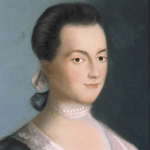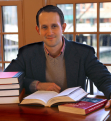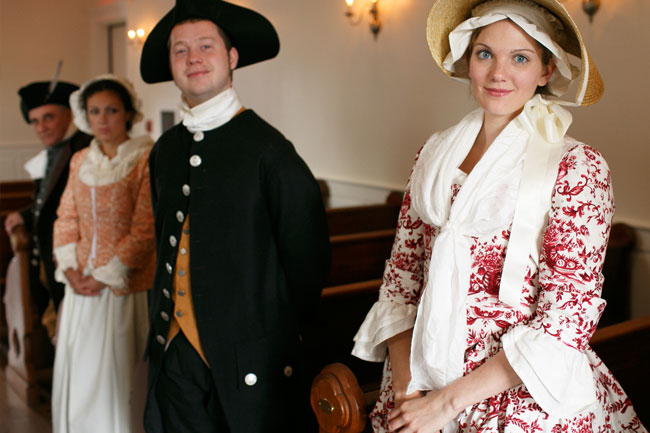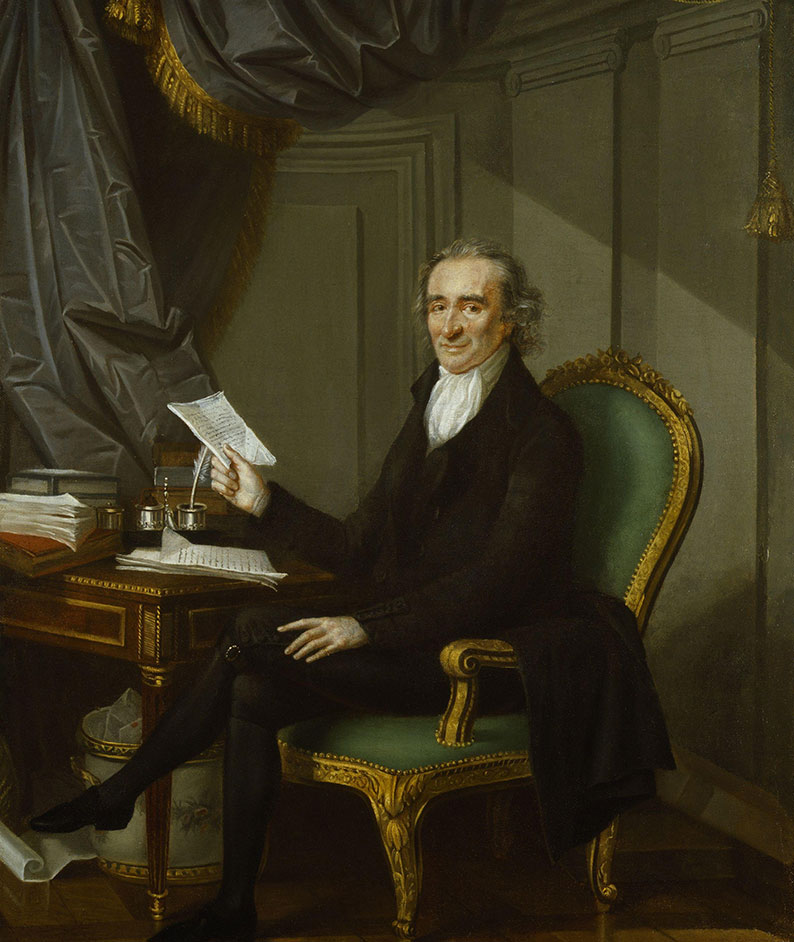Born to Deacon John Adams and Susanna Boylston on October 30, 1735, John Adams was born to a family of humble means and even humbler origins. He grew up on a farm in Braintree, Massachusetts where he learned how to plant and harvest crops at an early age. Even after John had enjoyed success as a lawyer and politician, he would still remind his sons John Quincy and Charles that farming is a tough, yet noble profession. When reflecting on his upbringing years later in a letter to Benjamin Rush, Adams rhetorically asked “What has preserved this race of Adamses in all their ramifications in such numbers, health, peace, comfort, and mediocrity?” John truly believed “it is religion, without which they would have been rakes, fops, sots, gamblers, starved with hunger, or frozen with cold, scalped by Indians, etc., etc., etc., been melted away and disappeared…” In short, John was proud of his modest family lineage, citing his upbringing as a New England farmer as imbuing him with industry at a young age.
Early Life of John Adams
Education
Early on, Deacon John Adams noticed his son was an exceedingly gifted student. For this reason, young John would eventually be enrolled at Harvard to become a minister. But John, while being very bright for his age, originally had no interest in learning. Returning from dame school one day, John insisted to his father that he had no interest in college; he simply wanted to be a farmer.
To prove a point, Deacon Adams took his son to the fields the next day so John could get a taste of the hardships a farmer endured. John Adams would recall how his father kept him working at an exhaustive pace for the entirety of the day. Upon their return from the fields, Deacon Adams asked “Well, John, are you satisfied with being a farmer?” to which John replied “I like it very well sir.” But Deacon Adams stubbornly insisted that John attend school, and devote himself to his studies. In response to John’s enthusiasm for fieldwork, Deacon Adams replied “but I don’t like it so well: so you will go back to school today.”
John protested that it was his teacher he disliked, and that he wished to attend another school. Upon hearing this, John was immediately removed from school, and enrolled in a private school under the care of a schoolmaster named Joseph Marsh. John responded well to his new instructor, and as a result, he threw himself into his studies like never before. Under Marsh, John was introduced to classical texts such as Cicero’s Orations which would form the basis for his future studies and views on government. Years later while in Holland on a diplomatic mission, John Adams was appalled to discover his sons John Quincy and Charles Adams had not been exposed to Cicero by their tutor. John Quincy and Charles were to begin learning the author immediately, John Adams exclaimed, “I absolutely insist upon it.”
Admission to Harvard University
John Adams’ exposure to the classics formed the foundation of his education—and this would prove indispensable to his career. At the age of fifteen, John rode unaccompanied to Cambridge to appeal to the president and masters of Harvard for admission into the college. John Adams was fearful that he would be rejected, but much to his surprise, he was admitted with a partial scholarship. To pay for the remainder of his education, Deacon Adams sold ten acres of his land—a small investment for what would turn out to be a brilliant career as a public servant.
Harvard at this time was composed of approximately one hundred students under the tutelage of seven faculty members. John’s class of 1755 was put in the care of John Mayhew, a Latin scholar, and with his guidance, John excelled. His favorite subjects were science and mathematics, and with the help of his favorite professor, John Winthrop, Adams distinguished himself from his peers. But above all, John loved books, as he was never seen without one at Harvard, or at any other point during his life for that matter.
Teaching Career
Following his graduation from Harvard in 1755, John Adams took a position as a schoolmaster in Worcester. Unlike Cambridge, his post at Worcester left him isolated. Nearly sixty miles from his native Braintree, Adams spent many evenings alone with his thoughts. As a teacher, Adams considered himself ill prepared for the daily routine, and even his students remarked how he would constantly be seen at his desk writing, taking little notice of his pupils. At times, Adams would drift off into a daydream and imagine his position to be more important than it actually was. “I sometimes, in my sprightly moments, consider myself, in my great chair at school, as some dictator at the head of a commonwealth” Adams delighted. “In this little state I can discover all of the great geniuses, all the surprising actions and revolutions of the great world in miniature. I have several renowned generals but three feet high, and several deep-projecting politicians in petticoats.”
But at the end of the day, when Adams retired to his home, he would find himself overcome by feelings of loneliness and despair. “I have no books, no time, [and] no friends. I must therefore be contented to live and die an ignorant, obscure fellow,” he lamented. John was frightened that he would never amount to anything while in Worcester, but at the same time felt that he was too smart for his surroundings.
While at Worcester, he wrote almost daily. David McCullough noted that, “Something of the spirit of the old Puritan diarists took hold [in Adams]. By writing only to himself, for himself, by dutifully reckoning the day by day his moral assets and liabilities, and particularly the liabilities, he could thus improve himself.” And by keeping a diary almost religiously, Adams sought to do just that. On July 21, 1756 Adams vowed “I will strive with all my soul to be something more than persons who have had less advantages than myself.”
Law Studies
Adams was certain that he was destined for greatness, in spite of his perceived disadvantages. One month later, on August 21, 1756, John signed a contract with James Putnam, a young attorney from Worcester, to study law for two years. The following month, John moved in with Putnam to pursue his career in law while continuing to teach at the Worcester schoolhouse. He devoured the legal texts Putnam lent him, and in no time he had breezed through several legal books that would become crucial to his understanding of English law, and constitutional rights.
In the autumn of 1758, Adams finished his two year contract with Putnam and moved back to Braintree to establish a legal practice of his own. But he continued to read legal texts voraciously. He was full of opinions, he would recall, but “I was young and then very bashful.” But still Adams had faith in his own star, and believing he was destined for greatness, he attended court where he witnessed the two leading attorneys of the day; Jeremiah Gridley and James Otis Jr. argue their cases. Adams exuberantly explained to a friend, “I had the pleasure to sit and hear the greatest lawyers, orators, in short the greatest men in America, haranguing at the bar, and on the bench.” Indeed, John was awestruck to watch James Otis Jr. argue with such passion and ferocity, completely outwitting his opponents. It was at this time that John Adams approached Jeremiah Gridley to admit him to the bar. Gridley questioned Adams on his studies for several hours, leaving him with sound advice to “pursue the study of the law itself, rather than the gain of it.”
On November 6, 1759, John was admitted to the bar before the Superior Court at Boston. Within a few weeks, Adams took his first case in which he lost on the wording of the writ he drew up. The outcome of the case was humiliating to John, but provided him with the spirit to overcome his pitfalls by applying himself to his profession like never before. Never again, he vowed, would he be bested in the court of law. Drawing inspiration from Cicero, Adams read aloud “The first way for a man to set himself on the road to glorious reputation is to win renown.” To acquire the glorious reputation and the renown he so desired, he decided he would have to open a practice in Boston, where more opportunities would be available.
“On The Road to Glorious Reputation”
When in Boston, Adams studied his mentors even more closely. Adams noted the lordly and graceful manner of Jeremiah Gridley, and admired the zeal of James Otis Jr. He imitated these lawyers so that he might someday enjoy their success. But Adams most aspired to be more like James Otis, and he fashioned his courtroom demeanor on the famous attorney who mentored the leading patriot politicians of the era. “I find myself imitating Otis” Adams remarked.
But John Adams had yet to mature into the great attorney he would later on prove himself to be. He was exceedingly bashful and insecure about his shortcomings. In order to improve his self-esteem, Adams observed people around him, noting their strengths and weaknesses with the purpose of discovering his own strengths so he might improve his character. In his younger years, he depended heavily on his friends for moral support. His two closest friends were Richard Cranch, a clockmaker who enjoyed discussions on philosophy and theology, and Jonathan Sewall, an aspiring attorney who would later become the Attorney General of Massachusetts. While the times would change, and their views would differ drastically on politics, religion, and government; Adams would always cherish his friends. Friendship, Adams pronounced “is one of the distinguishing glorys of man.”
Meeting Abigail Adams
It was through Adams’ friends that he would meet his future wife, Abigail Smith. It was anything but love at first sight. Adams met Abigail through his friend Richard Cranch who had been calling on her sister, Mary Smith, the oldest and by all accounts the most attractive sibling. One night, Cranch invited John to meet Abigail, the middle sister. She was only fifteen at the time, and was considered frail and awkward. Overall, he was disappointed in this first encounter, sensing no interest from Abigail Smith. As time would tell, his first impressions were wrong.
Nearly three years later, Richard Cranch and Marry Smith were married in November of 1762. By spending more time with Cranch, Adams was also sharing the company of the Smith family. After meeting Abigail, John engaged in correspondence, and at every opportunity, he visited her and the Smith family in Weymouth. In their letters, John addressed Abigail as Diana, the Roman goddess of the moon, while Abigail referred to John as Lysander, the Spartan hero. Abigail loved poetry, and loved to write, and in john she found a compatible pen pal. Much like John, she had opinions on everything and everyone, never shy to express herself in the company of others. She was talkative and well-read, which she attributed to her brother-in-law Richard Cranch for exposing her to the famous poets including Milton and Shakespeare. Her command of the English language shined through in her eloquent letters to John, and it was their correspondence that formed the foundation of their loving relationship. Command of the pen would be crucial to the endurance of their relationship, as they would spend several years apart while John was actively engaged as a public servant.
Marriage to Abigail Adams
At first, Abigail’s mother opposed the marriage. Abigail’s mother was the daughter of John Quincy, whose family ranked at the top in Braintree. In effect, Abigail would diminish her social status by marrying John. But this did not deter her or John from pursuing the courtship. On October 25, 1764, John Adams and Abigail Smith were married. As David McCullough would note, John’s decision to marry Abigail Smith “was the most important decision of [his] life, as would become apparent with time.”




